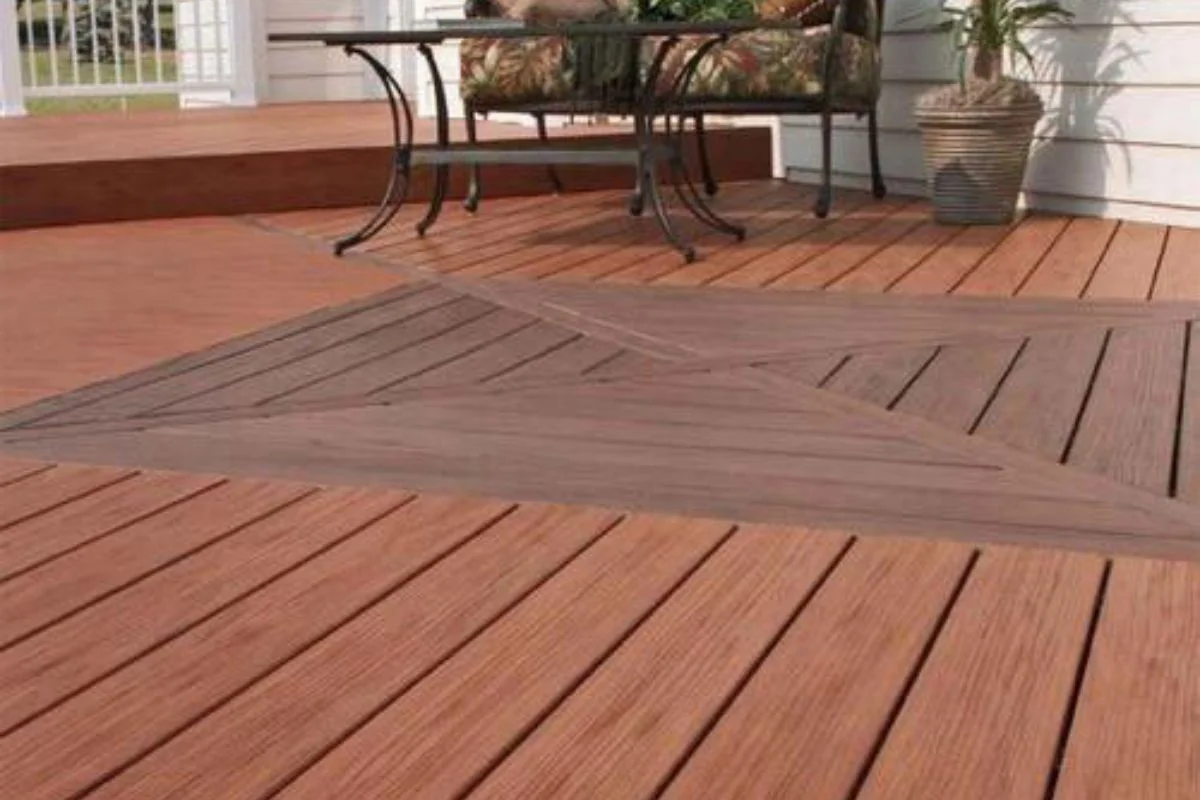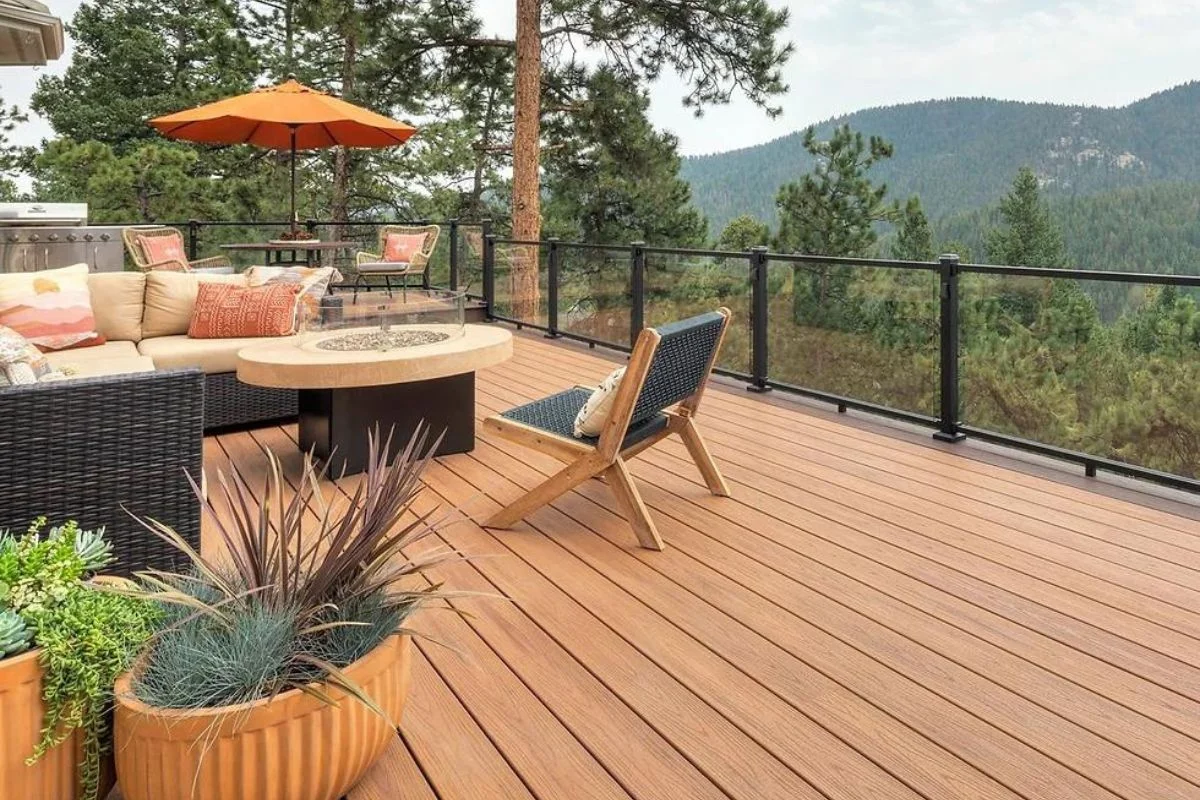
Transforming your outdoor space into a stylish and inviting oasis is now easier than ever with the latest design trends in outdoor WPC (Wood Plastic Composite) flooring. As more homeowners seek to extend their living areas beyond the confines of their homes, outdoor WPC flooring has emerged as a popular choice for enhancing patios, decks, balconies, and other outdoor areas.
In this article, we’ll explore the exciting design trends and stylish options available in outdoor WPC flooring. From natural wood-look planks to contemporary tile and stone designs, there’s a wide range of options to suit every taste and preference. Whether you’re aiming for a sleek and modern aesthetic or a rustic and cozy ambiance, outdoor WPC flooring offers versatility, durability, and aesthetic appeal.
Join us as we delve into the latest design trends, innovative patterns, and creative ideas that are transforming outdoor spaces with WPC flooring. Discover how you can elevate your outdoor living experience, create a seamless transition between indoors and outdoors, and make a bold statement with your outdoor design choices.
Brief overview of outdoor WPC flooring
Outdoor WPC (Wood-Plastic Composite) flooring is a versatile and durable alternative to traditional outdoor flooring materials like wood, stone, or concrete. It is made by combining wood fibers or flour with plastic polymers, resulting in a material that offers the natural look and feel of wood while providing the strength and weather resistance of plastic. Outdoor WPC flooring is specifically designed to withstand harsh outdoor conditions such as rain, sunlight, and temperature fluctuations, making it ideal for use in decking, balconies, terraces, and other outdoor areas. Its low maintenance requirements, eco-friendly properties, and wide range of design options make it a popular choice for enhancing outdoor spaces with style and functionality.
Definition and explanation of WPC (Wood-Plastic Composite)
Wood-Plastic Composite (WPC) is a material composed of natural wood fibers or flour combined with thermoplastic polymers, typically polyethylene, polypropylene, or polyvinyl chloride (PVC). This composite material is engineered to harness the beneficial properties of both wood and plastic, resulting in a versatile and durable material suitable for various applications.
The process of creating WPC involves mixing wood fibers or flour with the plastic polymers under heat and pressure. This combination results in a homogeneous material with the appearance and texture of natural wood but with enhanced durability and weather resistance.
WPC offers several advantages over traditional wood and plastic materials. It retains the natural look and feel of wood while being more resistant to moisture, rot, and decay. Additionally, WPC is highly customizable, allowing for a wide range of colors, textures, and finishes to match different design preferences.
Due to its durability, low maintenance requirements, and eco-friendly properties (as it often incorporates recycled materials), WPC has become a popular choice for various applications, including decking, fencing, cladding, outdoor furniture, and more. It provides an attractive and long-lasting solution for both residential and commercial projects, offering the best of both worlds by combining the natural beauty of wood with the practical advantages of plastic.
Importance of selecting the right Outdoor WPC Flooring material
Selecting the right outdoor WPC (Wood Plastic Composite) flooring material is crucial for several reasons:
Durability: Outdoor flooring is exposed to harsh weather conditions like rain, sun, and snow. Choosing a durable WPC material ensures that your flooring can withstand these elements without warping, cracking, or fading over time.
Low Maintenance: The right WPC flooring material requires minimal maintenance, saving you time and effort in cleaning and upkeep. Look for materials that are easy to clean and resistant to stains, mold, and mildew.
Longevity: Investing in high-quality WPC flooring ensures longevity. It means you won’t have to replace your flooring frequently, saving you money in the long run.
Aesthetics: Outdoor flooring contributes significantly to the overall aesthetics of your outdoor space. Choose a WPC material that complements the style of your home and enhances the visual appeal of your outdoor area.
Safety: Safety is paramount, especially for outdoor areas where people may walk barefoot. Select WPC flooring with a slip-resistant surface to prevent accidents and ensure the safety of your family and guests.
Environmental Impact: Consider the environmental impact of the materials you choose. Opting for WPC flooring made from recycled materials or sustainably sourced wood helps reduce your carbon footprint and supports eco-friendly practices.
Cost-effectiveness: While quality comes at a price, it’s essential to find a balance between cost and quality. Investing in moderately priced WPC flooring that meets your requirements for durability, aesthetics, and sustainability can save you money in the long term by avoiding frequent replacements or repairs.
Installation Ease: Choose WPC flooring that is easy to install, whether you’re hiring professionals or doing it yourself. Easy installation can save time and money on labor costs.
Advantages and Disadvantages of Outdoor WPC Flooring
Outdoor WPC (Wood Plastic Composite) flooring offers several advantages and disadvantages:
Advantages:
Durability: WPC flooring is highly durable and resistant to rot, decay, and insect damage, making it suitable for outdoor use in various climates.
Low Maintenance: WPC flooring requires minimal maintenance compared to traditional wood decking. It doesn’t need staining, sealing, or painting, saving time and money on upkeep.
Water Resistance: Unlike wood, WPC flooring is water-resistant, making it ideal for outdoor areas exposed to moisture, such as decks, patios, and poolside areas.
Stain Resistance: WPC flooring is resistant to stains, spills, and fading from UV exposure, maintaining its appearance over time with minimal fading or discoloration.
Eco-Friendly: Many WPC flooring products are made from recycled materials, reducing the demand for virgin wood and contributing to environmental sustainability.
Versatility: WPC flooring comes in a variety of colors, textures, and finishes, allowing for customization to suit different outdoor design preferences and aesthetics.
Easy Installation: WPC flooring typically features a click-lock or tongue-and-groove system, making installation straightforward and suitable for DIY projects.
Disadvantages:
Initial Cost: WPC flooring may have a higher initial cost compared to traditional wood decking materials. However, the long-term savings from reduced maintenance and longevity can offset this initial investment.
Heat Retention: Some WPC flooring products may retain heat, especially in sunny climates, making them uncomfortable to walk on barefoot during hot weather.
Sensitivity to Temperature Changes: WPC flooring can expand and contract with temperature fluctuations, leading to gaps or buckling if not installed correctly or if the subfloor is not adequately prepared.
Limited Natural Aesthetic: While WPC flooring can mimic the look of natural wood, some people may prefer the authentic appearance and feel of real wood decking.
Potential for Mold Growth: Although WPC flooring is resistant to moisture, improper installation or inadequate ventilation can create conditions conducive to mold and mildew growth.
Scratch Resistance: While WPC flooring is generally more scratch-resistant than traditional wood decking, it may still show signs of wear and tear over time, especially in high-traffic areas.
Installation and Maintenance Tips
Installation Tips:
Prepare the Subfloor: Ensure the subfloor is clean, dry, and level before installing WPC flooring. Remove any debris, dirt, or uneven patches to create a smooth surface.
Allow for Expansion Gaps: Leave a small gap (typically around 1/4 inch) between the edges of the WPC flooring and adjacent structures, such as walls or posts, to allow for natural expansion and contraction with temperature changes.
Use Proper Tools: Use appropriate tools for cutting and installing WPC flooring, such as a circular saw, jigsaw, or handsaw for cutting, and a rubber mallet for tapping the planks into place.
Follow Manufacturer Guidelines: Adhere to the manufacturer’s installation instructions and guidelines to ensure proper installation and warranty coverage. Different WPC flooring products may have specific requirements for installation methods and subfloor preparation.
Consider Joist Spacing: If installing WPC decking on a substructure, ensure proper joist spacing according to the manufacturer’s recommendations. Improper spacing can lead to sagging or structural issues over time.
Choose the Right Fasteners: Use stainless steel or corrosion-resistant fasteners designed for outdoor use to prevent rust and corrosion, which can compromise the integrity of the installation.
Maintenance Tips:
Regular Cleaning: Sweep or vacuum the WPC flooring regularly to remove dirt, debris, and leaves. Periodically use a mop or gentle scrub brush with mild soap and water to clean stubborn stains or spills.
Avoid Harsh Chemicals: Avoid using harsh chemicals, abrasive cleaners, or pressure washers on WPC flooring, as they can damage the surface finish and compromise the integrity of the material.
Prevent Mold and Mildew: Keep the WPC flooring dry and well-ventilated to prevent mold and mildew growth. Trim nearby vegetation to promote airflow and reduce moisture buildup.
Protect from Scratches: Place furniture pads or protective mats under heavy furniture to prevent scratches or indentations on the WPC flooring surface.
Inspect Regularly: Periodically inspect the WPC flooring for signs of wear, damage, or loose planks. Repair or replace any damaged sections promptly to prevent further issues.
- Apply Sealant (Optional): Some WPC flooring products may benefit from the application of a UV-resistant sealant to enhance color retention and protect against fading from sun exposure. Consult the manufacturer’s recommendations before applying any sealant.
Conclusion
In conclusion, selecting the right outdoor WPC (Wood Plastic Composite) flooring material is essential for creating a durable, low-maintenance, and visually appealing outdoor space. While WPC flooring offers numerous advantages, such as durability, low maintenance, and eco-friendliness, it’s essential to consider potential disadvantages like initial cost and sensitivity to temperature changes.





